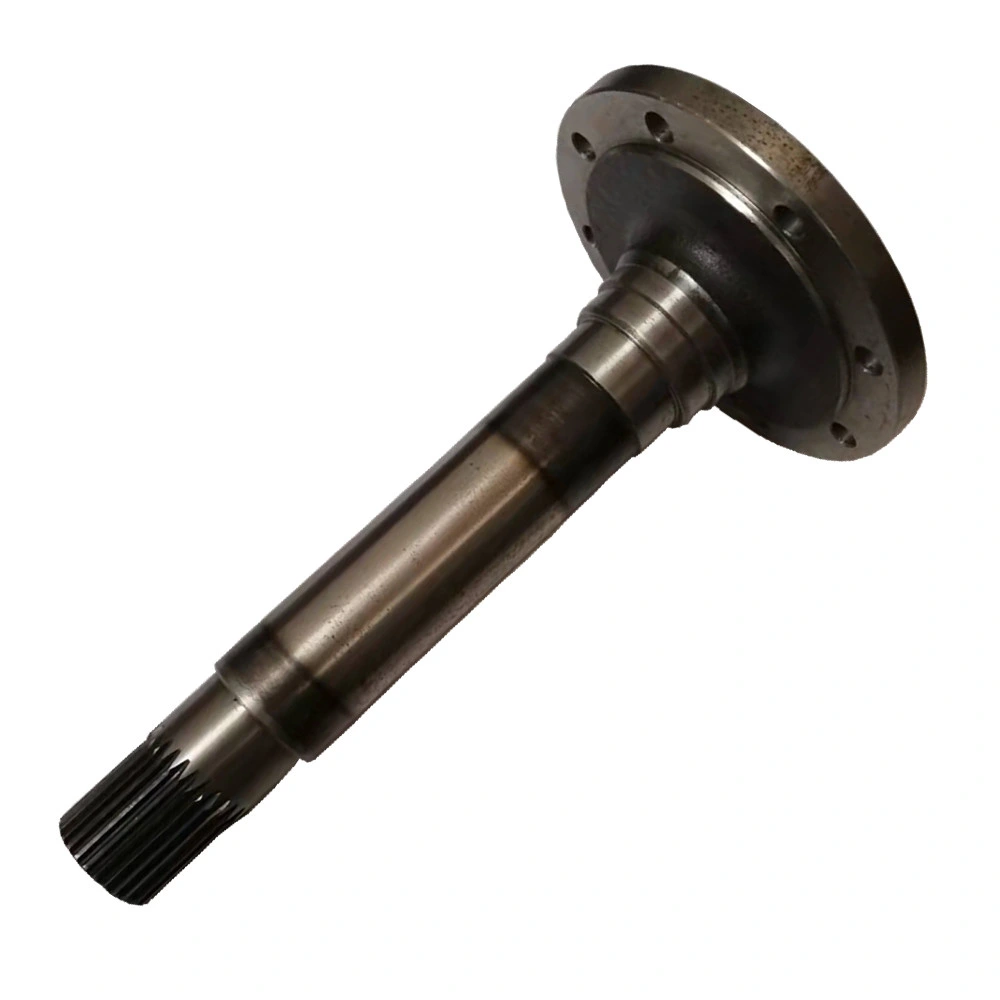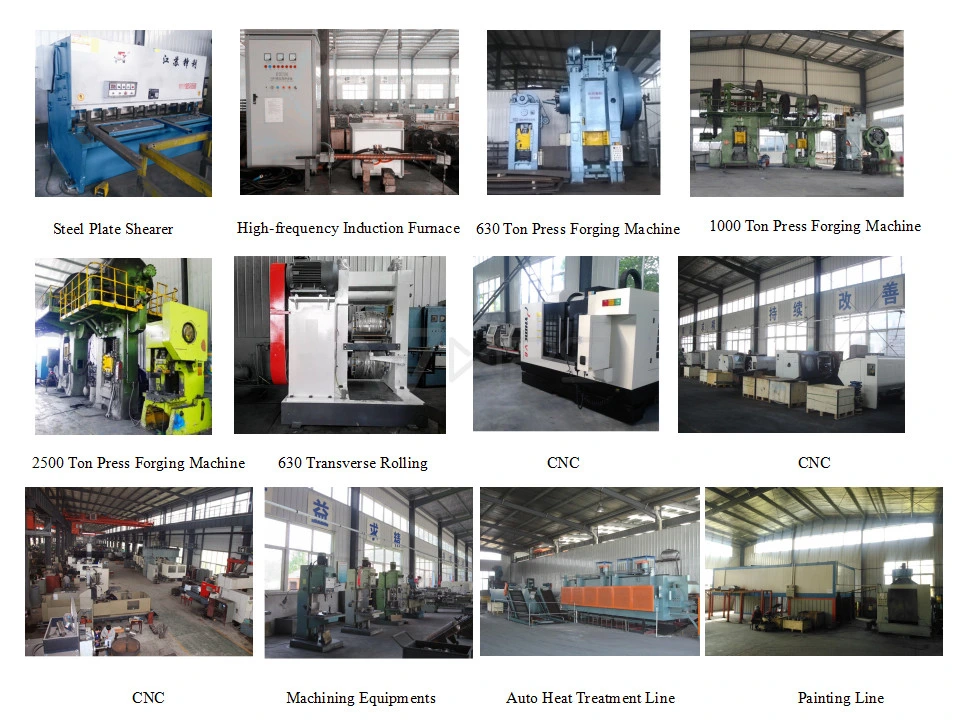Rail Vehicle Axle Spindle: A Comprehensive Analysis
1. Introduction to Rail Vehicle Axle Spindle
The rail vehicle axle spindle is a critical component in the rail transportation industry. It serves as the pivot point around which the wheels of rail vehicles rotate, enabling smooth and efficient movement. Understanding the nuances of axle spindles is essential for optimizing the performance and safety of rail vehicles.
2. Historical Evolution of Axle Spindles
The development of axle spindles has a rich history, dating back to the early days of railroads. Initially, axle spindles were rudimentary and lacked the precision engineering seen today. Over the decades, advancements in materials science and manufacturing techniques have significantly improved their durability and performance.
3. Materials Used in Axle Spindle Manufacturing
Modern axle spindles are typically made from high-strength steel alloys, which offer superior resistance to wear and fatigue. The choice of material is crucial, as it directly impacts the lifespan and reliability of the axle spindle.
4. Design Specifications of Axle Spindles
Axle spindles are designed to exacting specifications to ensure compatibility with various rail vehicles. Factors such as load capacity, rotational speed, and environmental conditions are taken into account during the design process.
5. Manufacturing Processes of Axle Spindles
The manufacturing of axle spindles involves several stages, including forging, machining, heat treatment, and quality control. Each step is meticulously executed to produce spindles that meet stringent industry standards.
6. Importance of Heat Treatment
Heat treatment is a critical process in the production of axle spindles. It enhances the mechanical properties of the steel, such as hardness and toughness, thereby extending the service life of the spindle.
7. Quality Control Measures
Quality control is paramount in the manufacturing of axle spindles. Rigorous testing, including non-destructive testing (NDT) and dimensional analysis, ensures that each spindle meets the required specifications.
8. Common Issues and Solutions
Axle spindles can experience issues such as fatigue cracking and wear. Regular maintenance and timely replacement of worn components are essential to prevent failures and ensure the safety of rail vehicles.
9. Innovations in Axle Spindle Technology
Recent innovations in axle spindle technology include the development of lightweight composite materials and advanced manufacturing techniques such as additive manufacturing. These advancements aim to improve performance and reduce maintenance costs.
10. Impact on Rail Vehicle Performance
High-quality axle spindles contribute to the overall performance of rail vehicles by providing reliable and smooth operation. They reduce downtime and maintenance costs, leading to more efficient rail transportation.
11. Environmental Considerations
The production and maintenance of axle spindles have environmental implications. Sustainable practices, such as recycling and the use of eco-friendly materials, are becoming increasingly important in the industry.
12. Case Studies of Axle Spindle Failures
Examining case studies of axle spindle failures provides valuable insights into common issues and preventive measures. These case studies highlight the importance of regular inspections and adherence to maintenance schedules.
13. Role of Axle Spindles in Safety
Axle spindles play a crucial role in the safety of rail vehicles. A failure in an axle spindle can lead to derailments and other catastrophic incidents. Therefore, ensuring the integrity of spindles is a top priority for rail operators.
14. Cost Analysis of Axle Spindle Maintenance
Maintaining axle spindles involves costs related to inspections, repairs, and replacements. A thorough cost analysis helps rail operators budget for these expenses and optimize their maintenance strategies.
15. Regulatory Standards and Compliance
Axle spindles must comply with various regulatory standards to ensure safety and performance. These standards are set by national and international bodies and cover aspects such as materials, design, and testing.
16. The Future of Axle Spindle Technology
The future of axle spindle technology looks promising, with ongoing research focused on enhancing durability, reducing weight, and improving manufacturing efficiency. Emerging technologies such as smart spindles with embedded sensors are also on the horizon.
17. Integration with Advanced Rail Systems
Axle spindles are increasingly being integrated with advanced rail systems, such as high-speed trains and automated rail networks. This integration requires spindles to meet higher performance standards and reliability.
18. Customization and Special Applications
Customization of axle spindles for specific applications is a growing trend. Rail operators can specify unique requirements for spindles to suit particular operational conditions, enhancing performance and longevity.
19. Global Market for Axle Spindles
The global market for axle spindles is expanding, driven by the growth of rail transportation. Key markets include North America, Europe, and Asia, each with its own set of demands and challenges.
20. Challenges in Axle Spindle Manufacturing
Manufacturing axle spindles involves challenges such as maintaining precision, ensuring material quality, and meeting delivery timelines. Overcoming these challenges requires advanced manufacturing capabilities and skilled workforce.
21. Training and Skill Development
Effective manufacturing and maintenance of axle spindles require skilled personnel. Training programs and skill development initiatives are essential to equip workers with the knowledge and expertise needed for high-quality production and maintenance.
22. Partnerships and Collaboration
Collaboration between rail operators, manufacturers, and research institutions is crucial for advancing axle spindle technology. Partnerships facilitate knowledge sharing, innovation, and the development of industry standards.
23. Customer Feedback and Improvement
Customer feedback plays an important role in the continuous improvement of axle spindles. Manufacturers use this feedback to refine their products and address any issues that arise during operation.
24. Competitive Landscape
The competitive landscape of the axle spindle market is characterized by numerous players offering a range of products. Staying competitive requires a focus on quality, innovation, and customer service.
25. Conclusion and Future Prospects
The rail vehicle axle spindle is an indispensable component, vital for the performance and safety of rail transportation. With ongoing advancements in technology and manufacturing processes, the future of axle spindles looks bright. Companies that invest in research, quality control, and customer satisfaction are well-positioned to lead the market.

Company Introduction and Product Promotion
Our company is a leading player in the Chinese axle market. Our product range includes axle spindles, beam axles, trans axles, axle surgeons, live axles, straight axles, torsion axles, axle shafts, and drop axles. We boast 300 sets of fully automatic CNC production equipment and fully automated assembly equipment.
We offer high-quality products at competitive prices and exceptional service. Customers are welcome to provide drawings or samples for custom orders. For more information, visit our factory:

Author: Czh
